
Rediscovering Japan

Rediscovering Japan
Travel (Jomon Sites of Aomori Prefecture Part 2 (Hachinohe)

by tomizuta
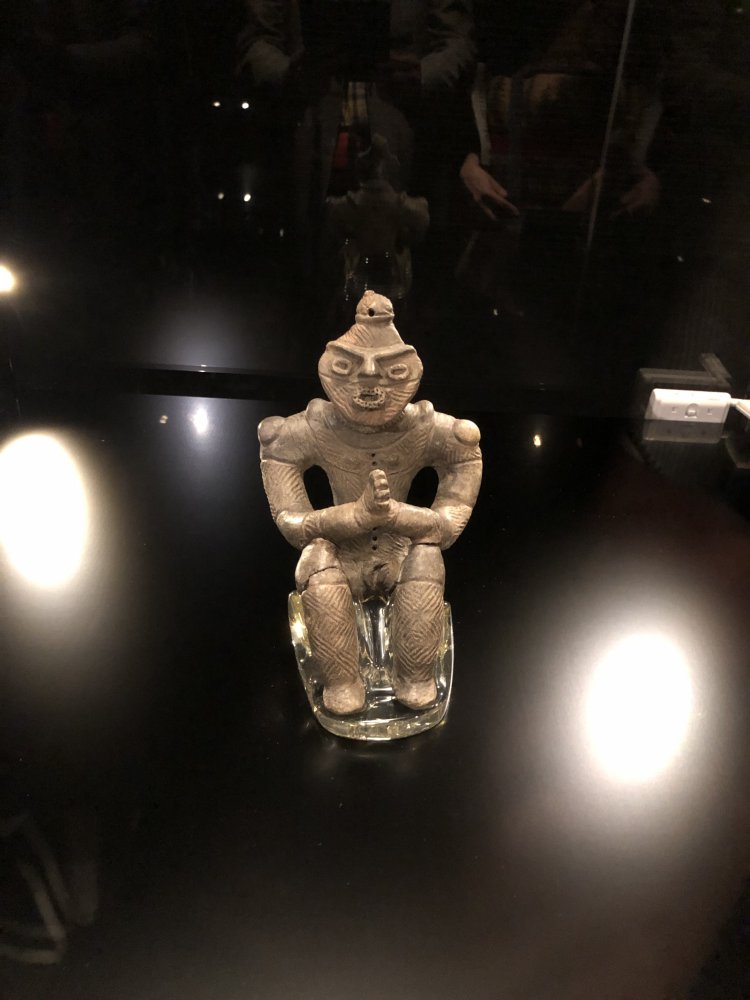
The praying clay figurine (a national treasure dated around 500 400 B.C.) excavated from the Kazahari No. 1 site in Hachinohe City is displayed at the Korekawa Jomon Museum. The doguu is called "gasshou doguu" as the clasped hands resemble a Buddhist hand gesture for praying.
We drove right through Aomori City and further east to where we were staying, Asamushi Onsen. Asamushi Onsen is located on the seaside about 12 kilometers northeast of Aomori City. I understand that the history of the onsen can be traced back to the 16th century from historical records. The town thrived in the last century with various attractions including an aquarium and an amusement park. However it has been in a recession especially with the Tohoku Earthquake in 2011 coupled with Covid-19. We stayed at a ryokan where shooting of an episode of a popular TV thriller series had taken place more than twenty years ago. After the now customary temperature check, we were taken to a spacious tatami room with an ocean view. The onsen bath close to the roof top was one of the largest I had ever experienced. The evening kaiseki course was delightfully composed of local dishes. Early in the morning we strolled along the beach and enjoyed the view of the unoccupied Yunoshima Island.
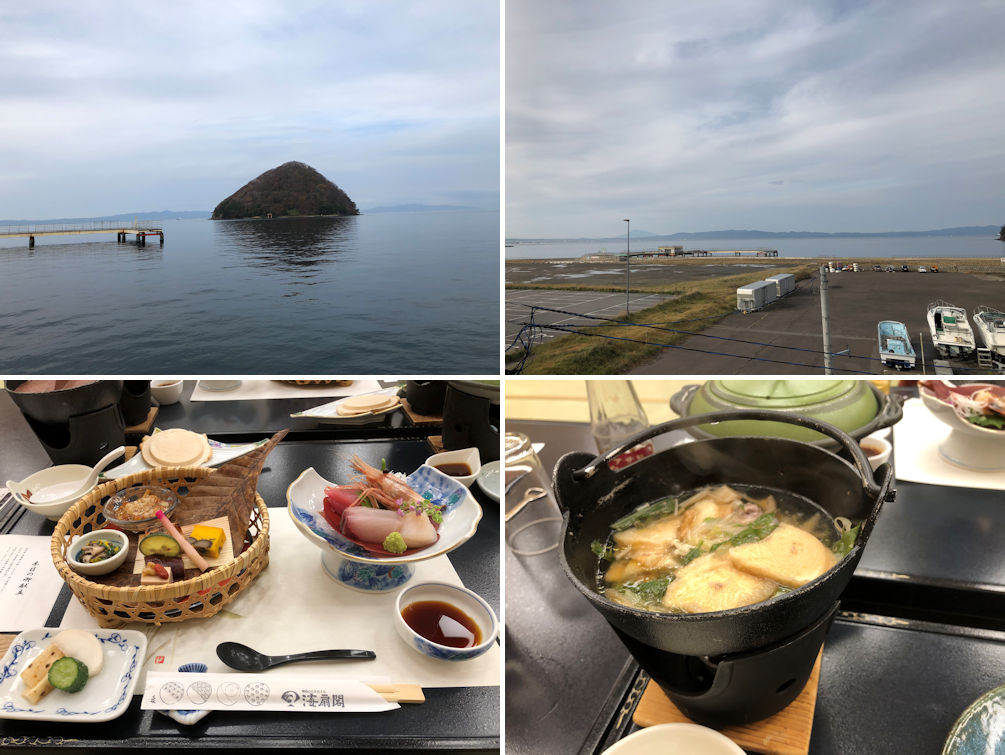
View of Yunoshima and Mutsu Bay (upper left), view of Mutsu Bay with the Asamushi Shore Fishing Park at the seafront, where you can try fishing (upper right), the appetizer (lower left) and local chicken Senbei Pot (lower right) served at the ryokan.
We left Asamushi Onsen for our next destination, Korekawa Archaeological Institute Museum in Hachinohe City, which was slightly less than a two hours’ drive to the east coast. There were two reasons for visiting Korekawa. One was that it was one of the few Jomon sites with an accompanying museum, and the second more importantly was because the museum housed the famed “praying doguu”, one of the five clay Jomon figurines designated as national treasures.
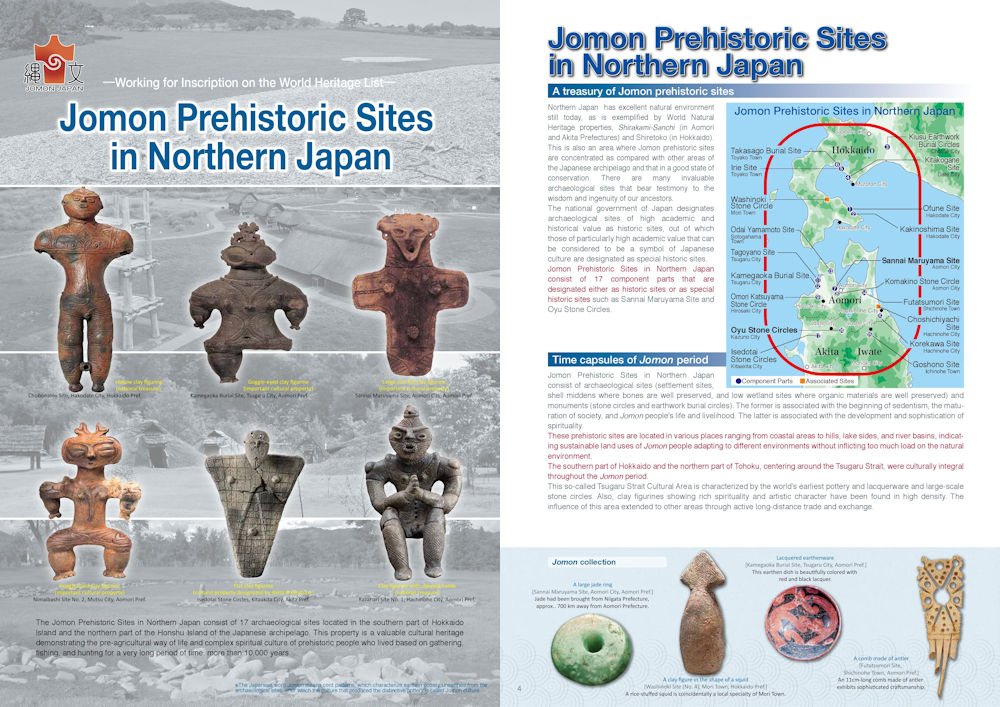
Parts of a leaflet I picked up at the Kamegaoka Jomon site. Of the six doguus on the left side, the praying doguu is featured on the lower right. You can see the location of Korekawa on the map on the right. The leaflet can be downloaded from https://jomon-japan.jp/en/library/material/. The leaflet is issued by the Council for the Promotion of the World Heritage Inscription of Jomon Prehistoric Sites led by Aomori Prefecture.
Let me pause for a moment to quote from the UNESCO World Heritage Tentative List for the Jomon sites in Hokkaido and Northern Tohoku. “This Jômon property is a group of unique archaeological sites representing a culture that continuously occupied the Japanese archipelago for nearly 10,000 years in the natural environment sustained by the humid temperate climate of the Holocene epoch, living in permanent settlements supported primarily by hunting, fishing, and gathering. This makes it distinct from Neolithic cultures in other regions of the earth which were established on agriculture and animal husbandry. The property possesses outstanding universal value as a testimony of a unique cultural tradition representing the way in which human beings coexisted with nature over an immense period of time in a specific geo-cultural region of our planet. While Jômon culture spread throughout the Japanese archipelago, it displayed particularly noteworthy development in eastern Japan during the era in which broadleaf deciduous forests extended through much of the region, as stable food supplies and the evolution of the techniques used in securing them led to the expansion of areas of permanent settlement, larger communities, and a sudden increase in the number of earthen figurines and stone ritual implements.” The image of the Jomon people I had developed at school half a century ago was a sort of primitive nomadic people clad in animal skin hunting for food. Archaeological surveys since then have revealed that Jomon people had settled in areas for thousands of years, and from around 3000 B.C. had developed and utilized highly spiritual and polished pottery, tools and other artefacts.
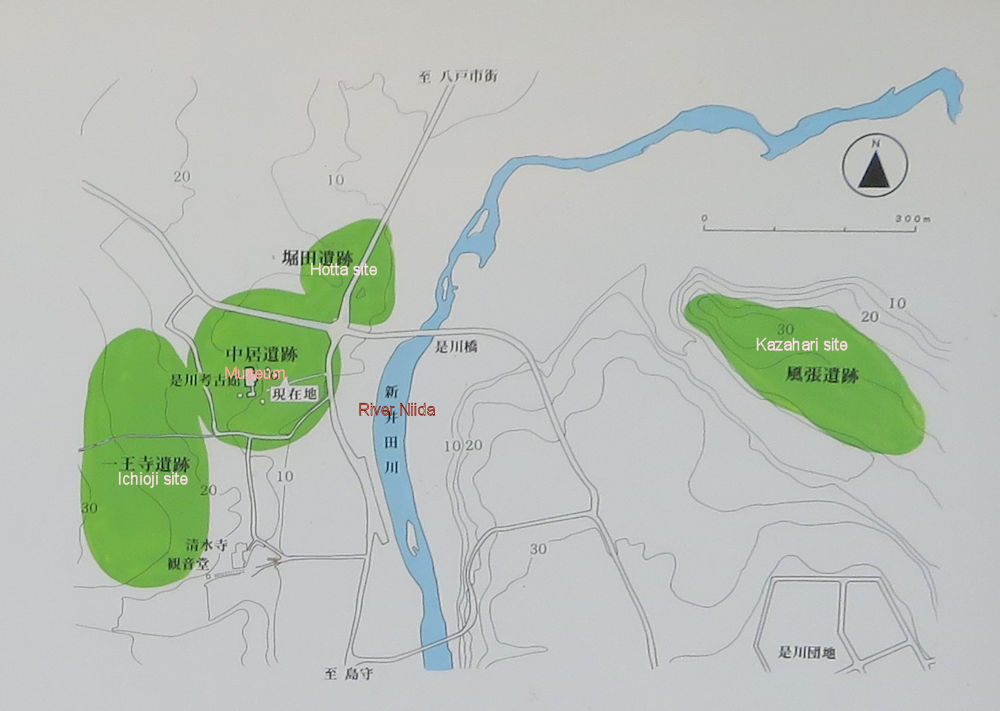
Map showing the four sites composing the Korekawa site and the museum.The four sites lie less than a kilometer apart. The praying doguu was excavated from the Kazahari site on the right.
Korekawa sites are composed of Ichioji site of the early (5000 to 3000 B.C.) to mid (3000 to 2000 B.C.) Jomon era, Hotta site of the mid Jomon era and Nakai site of the late Jomon era (2000 to 1000 B.C.). The existence of the sites were known from the Meiji era, but it was not until 1920 that two brothers started excavating the sites and collected the unearthed artefacts which they donated to Hachinohe City in 1961. The “praying doguu” was excavated at another site to the east on the opposite side of River Niida (which originates in Iwate Prefecture and flows through Hachinohe City to the Pacific Ocean) called Kazahari 1 site of the late Jomon era. We parked at the large car park in front of the Korekawa Archaeological Institute Museum. The museum was much more modern and larger than I had expected. It was opened in 2011 on the Nakai site. There is a cafeteria and gift shop by the side of the entrance where I had a cup of coffee costing only 100 yen. It appears they offer a Jomon curry and Jomon ramen made with wild rice and acorns that the Jomon people may have had. Other than the praying doguu which is a must-see, the museum has quite an extensive display of excavated artefacts including lacquered pottery and tools. The technique is so polished it is unbelievable that the artefacts were created more than 2,500 years ago. Indeed this was the area where Jomon culture peaked before giving way to the rice-growing Yayoi era.
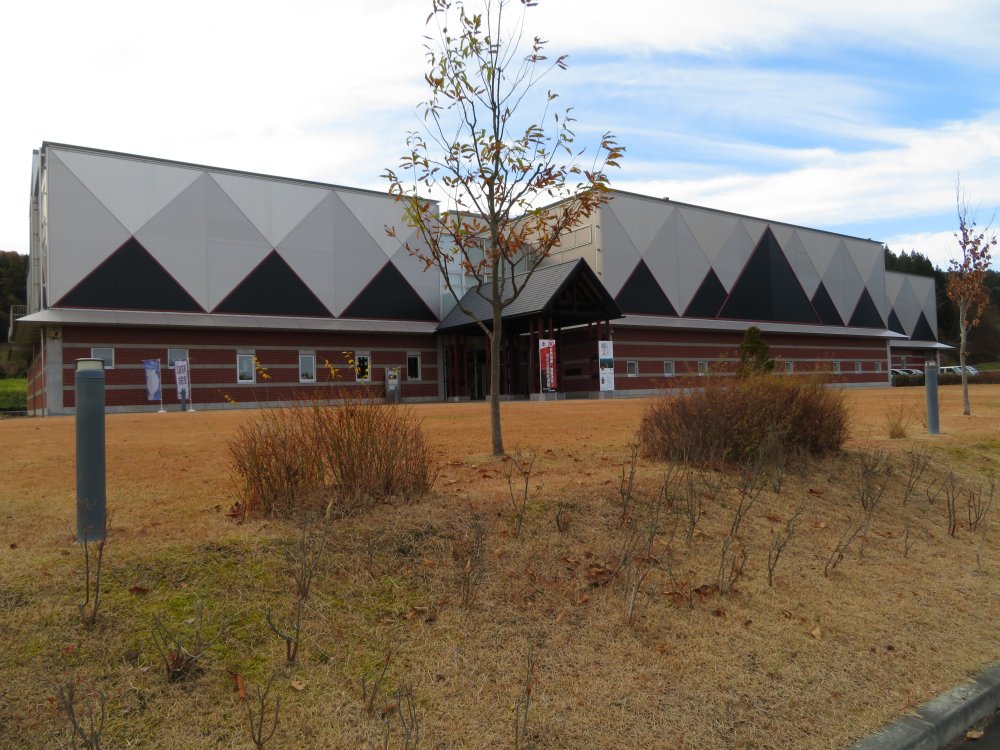
The museum was much more modern and larger than I had expected. It was opened in 2011 on the Nakai site.
We left the museum to explore the Nakai site on which the museum is located. Following the signs to the site, it was not long before we came to the museum annex which is closed to the public. Surrounding the annex were a couple of reconstructed Jomon dwellings as well as the site of a stone circle with a pillar in the center. It was a peaceful area in the woods, a typical Jomon small settlement. Although a long drive back and forth from Aomori, the visit was very very rewarding.
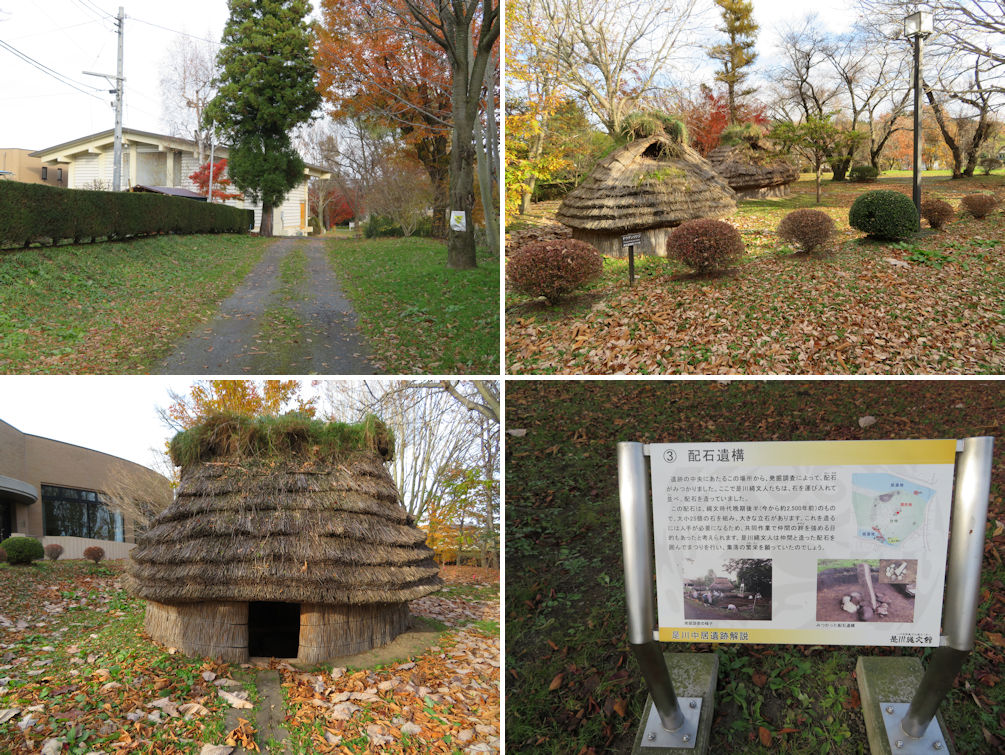
The museum annex was not that far away from the museum (upper left). Some reconstructed Jomon dwellings sat quietly in the woods (upper right). A closer view of a dwelling (lower left). The explanation of the stone circle was only provided in Japanese (lower right).